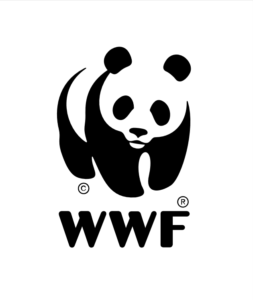Why is sustainable seafood good for… the environment?
Sound fisheries management, marine protected areas and selective fishing gear have a huge positive impact on the ocean environment and people who depend on it.
Species and habitats in danger
For centuries, vast oceans were seen as an inexhaustible source of fish and seafood. Today we know that more than 58 percent of fish stocks are fully fished or overfished (31 percent). [1]
Entire species such as the Pacific Bluefin tuna is at the edge of collapse and at an all-time low. [2] Destructive fishing practices can harm habitats and disrupt marine ecosystems, communities, productivity and diversity [3]. Due to overfishing and habitat destruction, fish stocks have no time and increasingly less space to recover.
Bycatch kills
Bycatch is the incidental catch of marine species that is often discarded. It is estimated to account for 40 percent of total global catch. [4] Marine species such as whales, dolphins and turtles are usually not targeted, but are often badly injured or killed as bycatch. It’s a senseless death and an enormous problem. Mitigation methods can reduce bycatch drastically.
Irresponsible aquaculture
Irresponsible aquaculture has many negative impacts. In some coastal regions for example, mangrove forests – a crucial spawning ground for many species – are being destroyed in order to build aquaculture farms. Furthermore, irresponsible aquaculture can contribute to overfishing. A large proportion of wild-caught fish is used to feed farmed fish. This increases, rather than reduces pressure on fish stocks. Responsible aquaculture systems help reduce pressure on fish stocks and natural habitats.
Healthy oceans benefit people
An ever-growing population, rapid development of coastal areas, weak fisheries management, booming aquaculture and poor understanding of the economic value of coastal resources to society has resulted in problems for the marine environment and the people that depend on it [5]
Preserved ocean habitats and healthy fish stocks are crucial for the livelihoods of coastal communities and small scale fisheries. Millions of people depend on fisheries as a source of food and income. Empty seas cause both empty stomachs and empty pockets.
3 facts on seafood and… environment
fact #1
- 50%
Today, every second fish consumed comes from aquaculture farms. [6] The sector’s transformation to using responsible systems is urgently needed.
fact #2
An estimated 300.000 whales and dolphins die entangled in fishing gear every year [7] Sustainable fishing is urgently needed to prevent the threat for marine wildlife.
Healthy seas and coastlines with intact ecosystems provide a strong platform for successful tourism. Sustainable fishing contributes to the preservation of valuable marine resources.
fact #3
- 90%
A unique WWF pilot project tested “C” hooks (instead of the common “J” shaped hooks) on tuna lines with 1,300 fishermen participating over 4 years and the result was overwhelming. Bycatch of turtles was reduced by 90 percent! [8]
Ok, but what can I do?
More people buying sustainable seafood means healthier oceans, lakes and rivers. A restored and maintained environment ultimately benefits people and the planet.
[1] FAO (Food and Agriculture Organization of the United Nations). The State of World Fisheries and Aquaculture 2016. Rome. Page 5. http://www.fao.org/fishery/sofia/en
[2] International Committee for Tuna and Tuna-like Species in the Northern Pacific. Stock Assessment of Bluefin Tuna in the Pacific Ocean. http://isc.fra.go.jp/pdf/2014_Intercessional/Annex4_Pacific_Bluefin_Assmt_Report_2014-June1-Final-Posting.pdf
[3] Jennings, S. & Kaiser, M.J. (1998) The effects of fishing on marine ecosystems. Advances in Marine Biology, 34, 201–352.
[4] DAVIES RWD, et al. Defining and estimating global marine fisheries bycatch. Marine Policy (2009). http://wwf.panda.org/about_our_earth/blue_planet/publications/?160861/Defining-and-estimating-global-marine-fisheries-bycatch
[5] FAO (Food and Agriculture Organization of the United Nations). The State of World Fisheries and Aquaculture 2016. Rome. Page 91. http://www.fao.org/fishery/sofia/en
[6] Food and Agriculture Organization of the United Nations (FAO). The State of World Fisheries and Aquaculture 2014. Rome. Page III. http://www.fao.org/3/a-i3720e.pdf
[7] Russell Leaper and Susannah Calderan (2018) Review of methods used to reduce risks of cetaceans bycatch and entanglement CMS technical series pub N°38 http://d2ouvy59p0dg6k.cloudfront.net/downloads/cms_report_042918_web_pages.pdf
[8] WWF Article. Fishing Technology That’s Letting Turtles Off the Hook. Bycatch Initiative: Eastern Pacific Programme.
http://wwf.panda.org/who_we_are/wwf_offices/peru/?143981/Fishing-Technology-Thats-Letting-Turtles-Off-the-Hook















